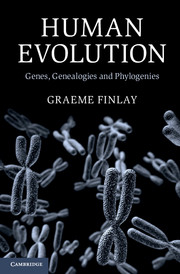2 - Jumping genealogy
Published online by Cambridge University Press: 05 June 2014
Summary
In Chapter 1, retroviruses and LTR retrotransposons were discussed together because they possess long terminal repeats (LTRs): sequences that mediate regulatory functions. These agents generate new copies of themselves using a back-to-front RNA-to-DNA copying step (hence the retro prefix). They insinuate these new DNA copies into the genomes of their host cells. And they share the property of being able to replicate in germ cells, so that new copies are transmitted to future generations. Each new ERV and LTR retrotransposon becomes a marker of a family lineage.
But they differ in their life cycles. Retroviruses possess an envelope gene that enables them to act as true infectious agents. Retroviruses have the capacity to invade cells that are different from the cell that produced them. Each new retrovirus may be domiciled as a provirus in a foreign genome. In contrast, LTR retrotransposons lack envelope genes and the capacity for transmission between cells. They are intracellular parasites. They are ‘copied and pasted’, via an RNA intermediate, to new sites only in the same genome.
LTR retrotransposons are not alone in the way they indulge in secretive, genome-modifying activity. Our genomes have been colonised by an extremely diverse and prolific community of partially autonomous segments of DNA. These bits of DNA multiply haphazardly without consideration of the integrity of the genome that harbours them. They are known collectively as transposable elements (abbreviated as TEs hereafter), mobile elements or (more colloquially) jumping genes.
- Type
- Chapter
- Information
- Human EvolutionGenes, Genealogies and Phylogenies, pp. 70 - 131Publisher: Cambridge University PressPrint publication year: 2013



